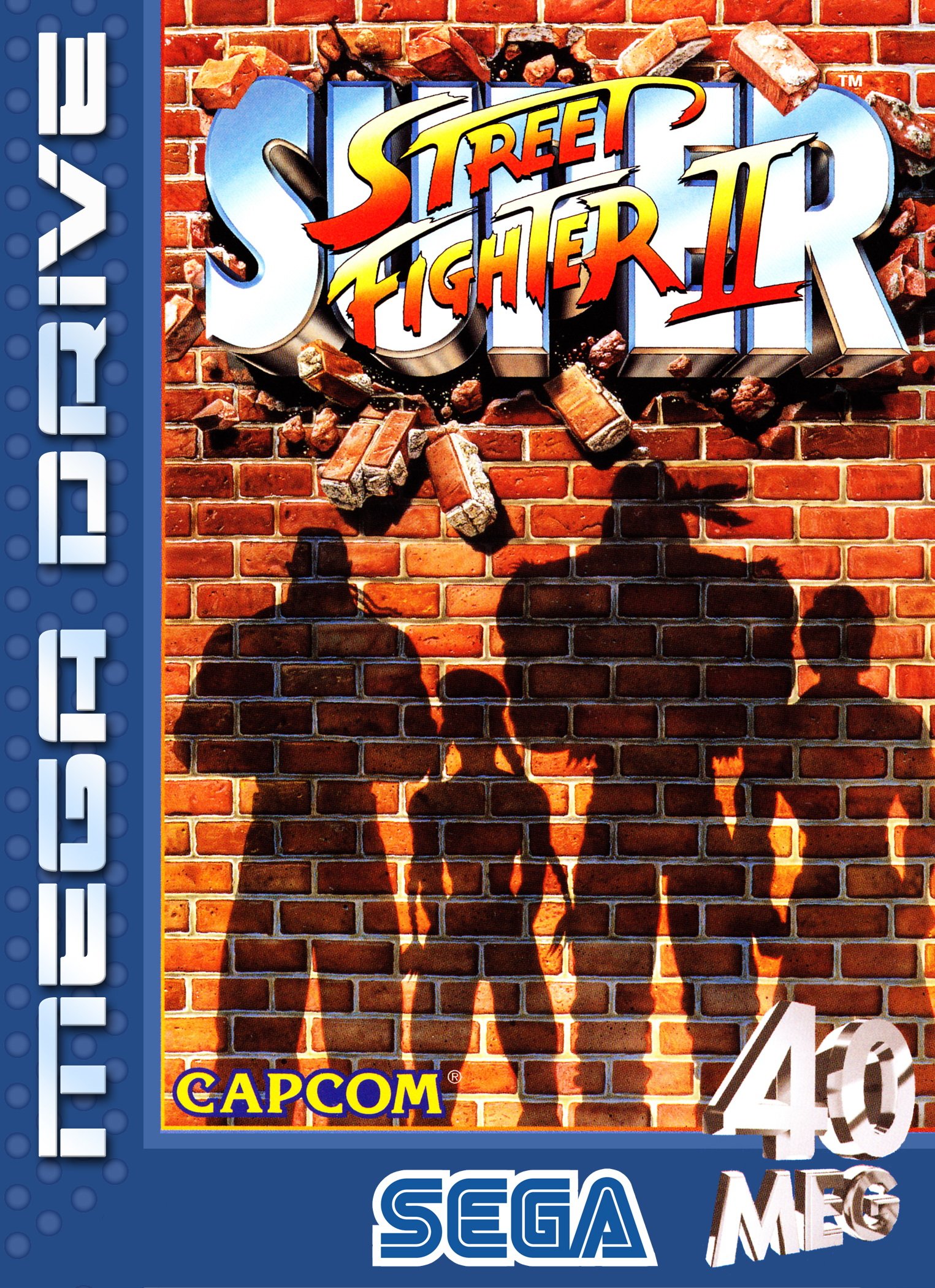
SUPER STREET FIGHTER II
Super Street Fighter II, released for the Sega Genesis in 1994, is a standout entry in the iconic fighting game franchise, bringing the arcade experience into the home with an impressive level of authenticity. This iteration builds upon the success of Street Fighter II Turbo by introducing new characters, refined mechanics, and expanded gameplay options, cementing its place as one of the most celebrated titles in the genre.
The game features a robust roster of 16 fighters, including four newcomers: T. Hawk, Fei Long, Cammy, and Dee Jay. Each character is meticulously designed with unique fighting styles, special moves, and backstories, offering players a variety of playstyles to master. This expanded roster not only adds depth to the gameplay but also enhances the competitive and replay value of the game.
Visually, Super Street Fighter II on the Sega Genesis is a strong adaptation of the arcade original. While not as graphically advanced as the SNES version due to hardware limitations, the Genesis port retains much of the detail and vibrancy of the character sprites and backgrounds. The stages are diverse and richly designed, from Guile’s airbase to Chun-Li’s bustling marketplace, each reflecting the personality and origins of the fighters. Smooth animations and dynamic special move effects, such as Ryu’s iconic Hadouken and Chun-Li’s Spinning Bird Kick, bring the action to life.
Gameplay is at the heart of Super Street Fighter II’s appeal. The game’s controls are responsive and precise, allowing for the execution of intricate combos, counters, and special moves. The speed is slightly slower than Street Fighter II Turbo, but this deliberate pacing emphasizes strategy and timing, rewarding players who master their chosen characters. The inclusion of Turbo mode in some versions addresses this, catering to fans of faster-paced combat.
Super Street Fighter II also introduces a scoring system that evaluates players’ performance based on factors like first attack, combos, and special move usage. This system encourages more skilled play and adds a layer of challenge for players aiming to achieve high scores. The AI opponents in single-player mode offer a balanced difficulty curve, gradually escalating in the challenge as players progress toward the climactic battle against M. Bison.
Audio plays a significant role in recreating the arcade experience. The Genesis version captures the iconic music and sound effects of the series, with slightly altered instrumentation due to the system’s sound chip. While the audio isn’t as crisp as on other platforms, it retains the energy and rhythm that define Street Fighter, with memorable stage themes and the satisfying impact of each hit.
The multiplayer mode is where Super Street Fighter II truly shines. Two players can compete head-to-head, showcasing the game’s balanced mechanics and engaging in heated matches that test reflexes, strategy, and adaptability. This competitive aspect solidifies the game’s reputation as a staple of social and tournament play.
In conclusion, Super Street Fighter II on the Sega Genesis is a faithful and thrilling adaptation of a fighting game classic. Its expanded roster, refined mechanics, and engaging gameplay make it a standout title in the Genesis library and a must-play for fans of the genre.

